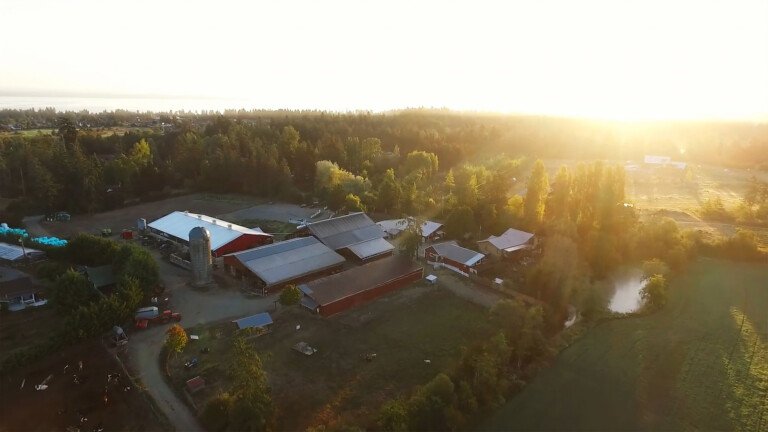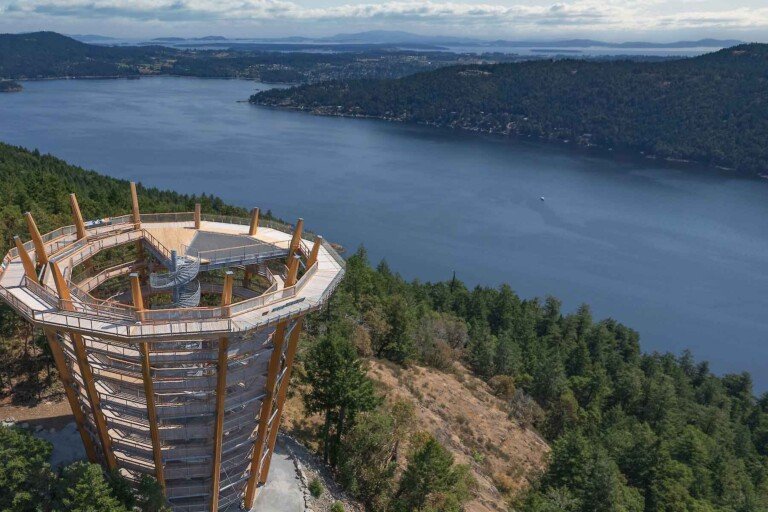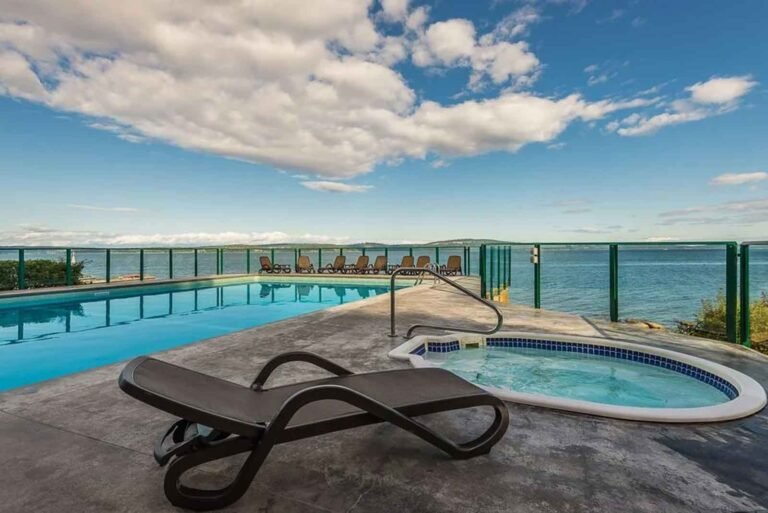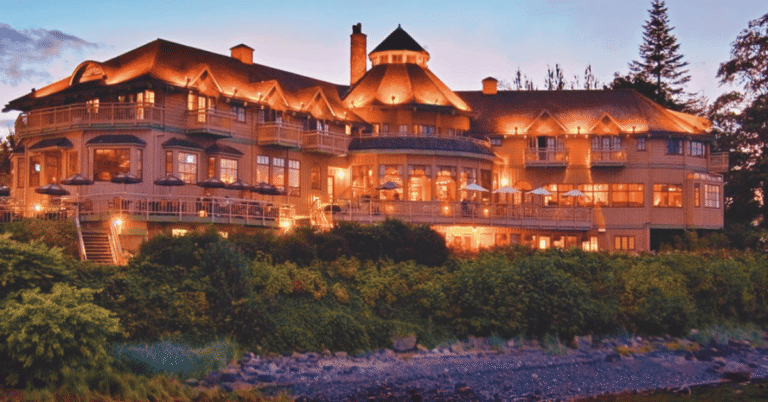Nestled in a hidden cove deep in the wilderness north of Tofino on Vancouver Island is the remote Quait Bay. Located off Herbert Inlet, Quait Bay offers a unique experience for the discerning outdoor enthusiast.
Discriminating wanderlusts visiting this luxurious wilderness playground will be surrounded by secluded beaches, deserted islands and old-growth forest, where anything goes and the possibilities for adventure are limited by imagination alone.
Most of the west coast of Vancouver Island falls within the traditional lands of the Nuu-chah-nulth First Nations people. Archaeological evidence indicates the presence of man along this outer coast of Vancouver Island for at least 4,300 years. The oral histories and knowledge of the legends of the Nuu-chah-nulth First Nation claim they have been here since the time the world was created.
Most of what is known about past population estimates, composition and territories of local native groups is based upon the knowledge of elders and observations of others recorded over the last two hundred years. Their livelihood was based on the immediate environment; the sea and the forest, which provided sustenance in the form of food, shelter, clothing and spiritual associations. Read more about the history of the Pacific Rim National Park.
Chinese immigrants working area gold mines in the late 1800s often took storm refuge in Quait Bay. Local diving legend has it that a Chinese Junk still rests at the bottom of Quait Bay, beautifully preserved by the cold water.
In the early 1900s there was a sawmill on the Quait Bay foreshore. The Darville family logged a small part of the land around the largest of the two lakes. The forest has since reclaimed its territory, but if you survey the lake shore you can still see where the untouched old-growth on three sides meets the reclaimed area in the foreground.
Getting to Quait bay is part of the adventure. The boat ride to Quait Bay from Tofino offers the anticipation of viewing bald eagles, black bears, otters and seals as you glide past rugged snow-capped mountains and ancient Western hemlock, Sitka Spruce and Western red cedar.
Natural wonders in the area include ancient forest cathedrals, magnificent stands of 1,000 year-old cedars, miles of walking trails, moss carpeted thickets, pristine lakes, miles of majestic coastline, abundant wildlife, and water so clear you can see into the depths.
Location: Quait Bay is located off Herbert Inlet, nine miles by water north of Tofino on the west coast of Vancouver Island. Quait Bay is accessed by float plane or a 20-minute boat trip from Tofino, via Clayoquot Sound.
Fishing: The clear coastal waters surrounding Quait Bay are an angler’s paradise, offering some of the best year-round sport fishing found anywhere in the world. The tidal waters of Clayoquot Sound teem with trophy halibut, chinook, coho and tyee salmon. Here, in fast water, clear and cold, and pristine crystal lakes – the time-honored pursuit of cutthroat, rainbow and steelhead plays out.
Clayoquot Sound was designated as the Clayoquot Sound UNESCO Biosphere Reserve by the United Nations in January 2000. A favoured destination for travellers from around the world, boating and kayaking in the calm waters of Clayoquot Sound provide one of the most rewarding ways to experience this pristine wilderness environment, where adventurers are truly at one with nature.
Hot Springs Cove, located in Maquinna Provincial Park in the remote northern end of Clayoquot Sound, is a splendid hot spring still enjoyable in its natural state. The boiling spring water cascades down a small cliff into a series of layered rock pools, cooled by the incoming ocean surf. Open year-round and accessible only by sea or air, guided tours from Tofino explore Hot Springs Cove, a popular destination with kayakers after paddling past Flores and Vargas Islands.
South of Quait Bay is the magnificent Pacific Rim National Park, the only national park on Vancouver Island, which provides protection for substantial rain forests and an amazing marine environment on the west coast of Vancouver Island. This unique park encompasses a total area of 49,962 hectare of land and ocean in three separate geographic units – Long Beach, the Broken Group Island and the West Coast Trail. Nature’s reward to hardy hikers include immense old-growth rainforests and significant Nuu-chah-nulth archaeological sites, long sandy beaches, prolific and abundant marine life, isolated beaches swept by powerful surf, cliffs, sea stacks, and surge channels.
Tofino, a pretty fishing village near the entrance to Clayoquot Sound, is a rapidly growing tourist centre for Long Beach and other Pacific Rim destinations. Once a timber and fishing town, Tofino has become a favoured destination for travellers from around the world.
Premier Business Listings in Quait Bay – West Coast Vancouver Island City Guide






